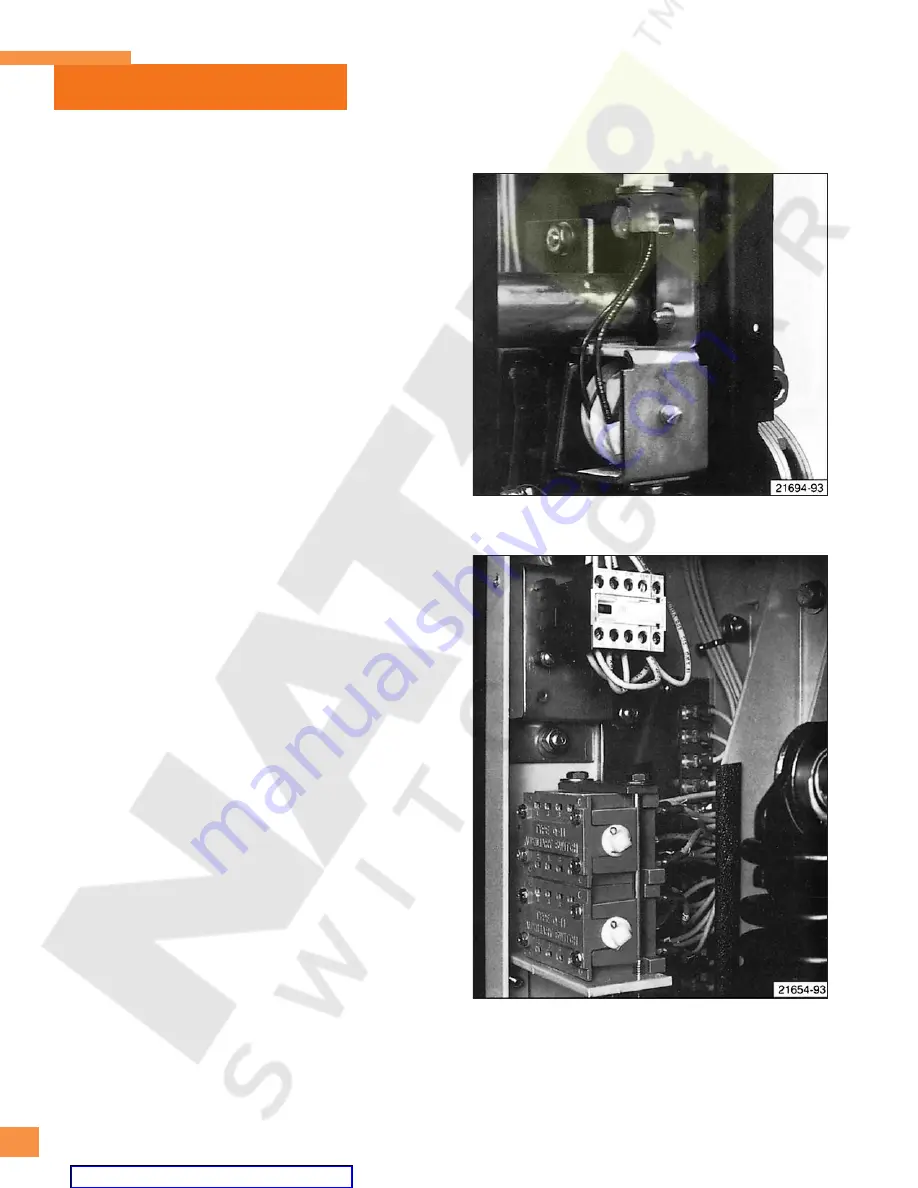
32
Overhaul
Figure 40:
Replacement of Closing Solenoid.
Figure 41:
Replacement of Anti-Pump Relay or Auxiliary
Switch.
Re-tighten by turning the support bolts clockwise until the
support bolt bushings firmly butt up against the support
bolt attachment bracket and the cross arm support shaft.
Replacement of Opening Spring
The opening spring may be removed and replaced without
the need to use a spring keeper or compression aid.
The opening spring assembly consists of the top and
bottom spring caps, threaded coupling rod with nuts, and a
supporting shelf. The shelf features location holes and tabs
which work in concert with supports in the circuit breaker
frame to secure the shelf.
Before disassembling the opening spring, carefully measure
and record the dimension between both spring caps (refer
to
Figure 39
). The dimension is adjusted during breaker
production cycling test at factory and should be between
6.75” and 6.875” or may slightly vary.
An adjustable crescent wrench allows an easy means of
grasping the shelf and lifting it slightly to disengage the
tabs in the self locating holes. With the tabs disengaged,
and grasping the top of the spring, the whole assembly can
be pulled forward.
When re-assembling, apply upward pressure to the shelf
over stationary support and to engage the shelf tab guides.
The shelf may then be guided into place. Verify that the
dimension between both spring caps corresponds to the
factory adjustment.
Replacement of Closing and Tripping Solenoids (Devices
52SRC and 52T)
Replacement of either the closing or tripping solenoids is
straightforward. Each solenoid has two mounting screws
and one quick disconnect terminal. Removing the mounting
bolts and quick disconnect terminal of the solenoid permits
it to slide out and to be removed. Replacement requires
careful insertion of the solenoid and re-attachment of the
mounting bolts and quick disconnect.
Figure 40
shows the
two screws which attach the close coil and the quick discon-
nect terminal for control leads. The trip coil arrangement is
similar.
Replacement of Anti-Pump Relay (Device 52Y)
Figure 41
helps illustrate the anti-pump relay removal
procedure. The two nuts holding the relay and its mounting
bracket are removed. The wires connected to the relay
should be tagged and disconnected, the relay and bracket
can then be extracted and replaced.













































